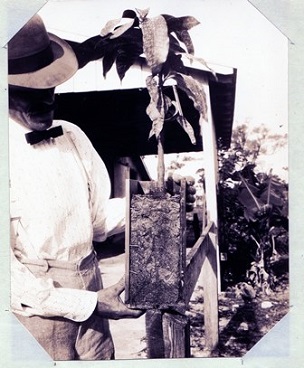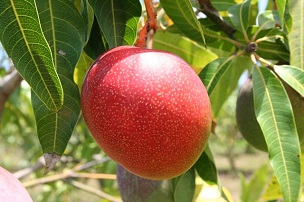The History of Mangos in South Florida (As published in the Miami Herald)
Jun 2024 • Rigo
It has been more than 200 years since mangos arrived in South Florida. Before 1900, only seedling mangos of turpentine were grown. Mangos arrived to South Florida when the pirates were surrounding Florida's coasts, navigating tempestuous waters from Fort Myers down to Sanibel and Captiva Islands, south to Naples and east to the coveted Keys. The pirates carried mango seeds, that for generations had made this peninsula their home.
Dr. Henry Perrine also attempted to introduce mango seedlings into Florida in 1833, unfortunately, these trees died from neglect following Perrine’s death. There are records of turpentine mango plantings along the Miami River sides in 1862 by Dr. Fletcher. By that time other trees were grown successfully from seeds. Some using imported seeds from Cuba.
The first successful introduction of grafted Indian varieties was made by Dr. David Fairchild; the USDA Division in 1889, the Mulgoba mango was one of these. None of these mangos made it except the Mulgoba tree.
A new mango tree born in Coconut Grove was a ‘Mulgoba’ variety, at Mrs. Florence Haden’s backyard during that fateful year in the 1910. The ‘Turpentine’ and ‘Mulgoba’ mangos, this unlikely pair -- the rather pedestrian, fibrous; yet, spicy ‘Turpentine’ from the Caribbean lowlands and the refined, smooth-fleshed and delicate ‘Mulgoba’ of India -- joined together and generated a new generation of mangos. The first discovery was named ‘Haden’, with an eye-stopping display of reds, yellows and greens overlaid by a sea of white highlights and of excellent flavor. It was named ‘Haden’ and quickly came to dominate the fledgling mango industry of Florida.

The Haden mango became popular early on and was the most popular commercially grown mango until World War II. The Haden is still a favorite back yard tree due to its delicious flavor. Other varieties became more popular to grow commercially because they could withstand the rigors of shipping, produced fruit more regularly and were more disease resistant.
‘Haden’ gave rise to the most important export mango cultivars in the world -- the same cultivars that would erase dominance in Florida and abroad. From the seeds of ‘Haden’, came the sweet and spicy ‘Kent’ of Miami; the pastel-hued ‘Keitt’ of Homestead, and the gorgeous, firm and productive ‘Tommy Atkins’ of Fort Lauderdale. As to the identity of the fathers, there exists only conjecture.

Many other Miami varieties are named after the people who discovered them. The Cushman, a yellow skinned variety was named after E.L. Cushman who planted the seed in 1936. The sweet delicious favorite Kent was first planted in 1932 on the property of Leith Kent.
Commercial production of the fruit now spans six continents, and here in Florida is where most of the world’s commercial varieties were developed. The ‘Tommy Atkin’, ‘Keitt’, and ‘Kent’, remain the most popular commercial varieties in Mexico, all Centeral America, Peru, Ecuador and Brazil, where the majority of the mangos we can get at the store in the USA, and they were all selected in Florida more than 100 years ago.
It used to be the best time of year for many local mango growers, when there were families that farmed 350 acres of mangoes during the 1970's, the glory days of the Florida mango. The mango empire stretched over 20 miles, from the outskirts of Miami to the heart of Homestead. There were groves next to suburban subdivisions, and groves planted right beside the wilds of the Everglades.
But today, all that remains is a single five-acre orchard. Ninety-nine percent of the mangoes in American supermarkets are imported from South America and the Caribbean -- but they are all varieties developed here in South Florida.
Mangos can be grown on the east and west coast of Florida - On the west, from Tampa Bay and the east coast from Cape Kennedy, or in the frost-free areas districts.
Every habitant in South Florida should have a mango tree. They are so many opportunities for mangos in South Florida. Of the six hundred different varieties grown around the world, they are grown here. Small, manageable landscape trees that yield an ample harvest of beautiful and delicious fruit and disease tolerant cultivars provide unprecedented opportunities for organic production to provide vital nutrition to our families. Early seasons have been chosen to avoid the summer rains, superior genetics to ward off the onslaught of disease; and practical sustainability.